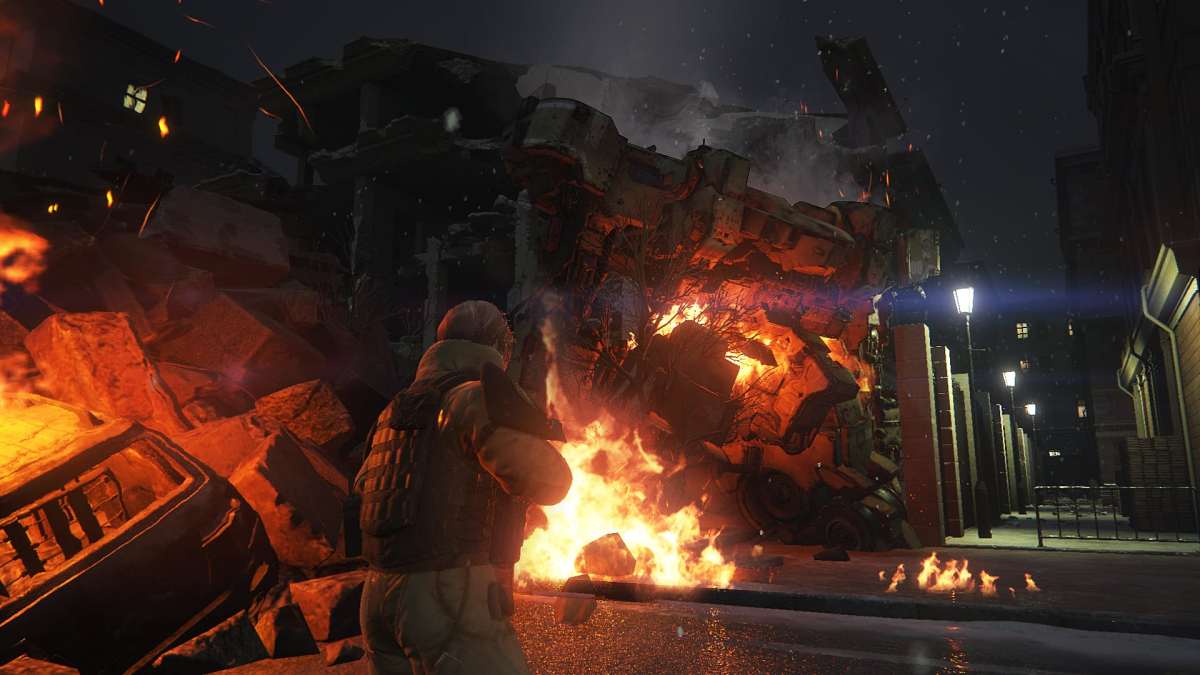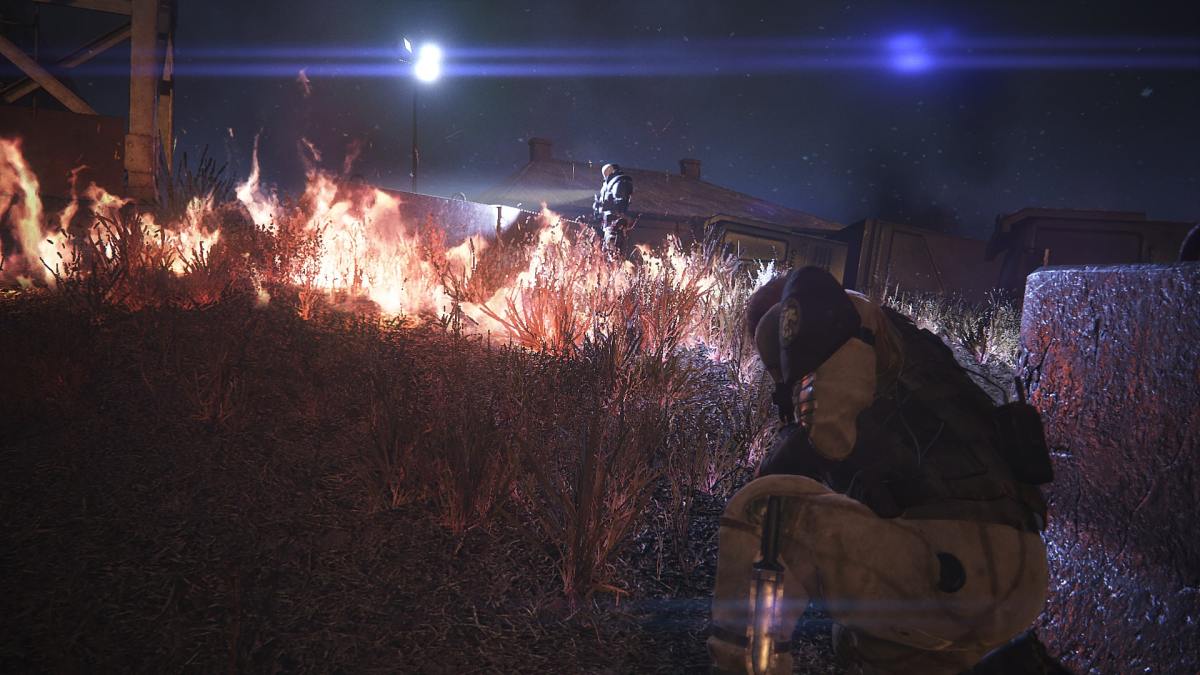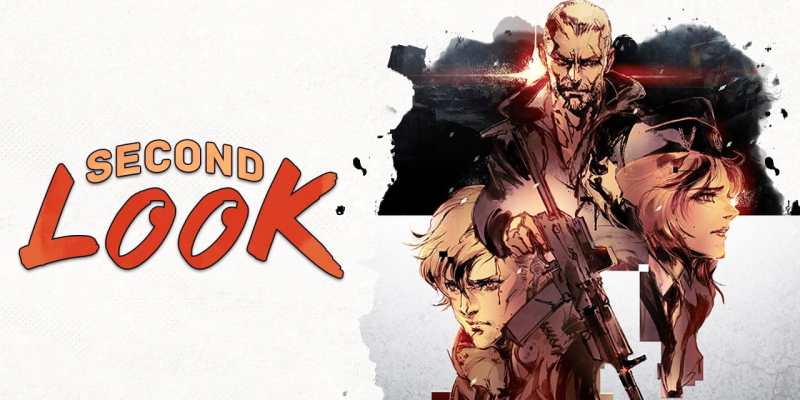Yes, I’m serious. Quite serious, actually. Granted, Left Alive was hard as nails at launch and benefited greatly from its post-launch patches. But that aside, the simple fact of the matter is Ilinx’s Left Alive manages to achieve what Naughty Dog’s The Last of Us Part II spends dozens of hours grasping at to no avail: making you think like a survivor in a bad situation with no right option.
Many went into Left Alive expecting a discount Metal Gear Solid game. If Vampire Rain, Mass Effect: Andromeda, and countless other games have taught us anything, it’s that players get angry when their expectations don’t match reality, actual intended game experience be damned. So it’s important to establish that Left Alive isn’t Metal Gear, though it takes several mechanics and ideas from The Phantom Pain. Left Alive is more a Japanese take on Pathologic, where doing the right thing is the most costly, ill-advised option. There’s also probably some Resident Evil lumped in, between overlapping storylines and oppressive challenges where fleeing is the best course of action rather than fighting.
It’s crucial to understand this as Left Alive is deliberate with its design. As three survivors, you’ll navigate a war-torn city invaded by a neighboring country set in the Front Mission universe. You aren’t losing — you’ve already lost. You aren’t the epic hero turning the tide, but instead just trying to survive. Desperation is your constant companion, licking at your heels with the clank of towering wanzer mechs just out of view, ready to pound you into a grease stain.
Your opponents are all super soldiers with exo suits. Their unmanned drones dart around and are always watching. The invading Garmoniyans have complete control of the city. You’ve got just a pistol and whatever you can scrounge up. Maybe if you’re lucky you’ll find a real weapon, but then you’ll need ammo, which will take up half your inventory — the rest of which will be whatever gear you can cobble together to buy yourself time whenever you run low on ammo.

Ambush tactics and guerrilla warfare can work for you somewhat. However, distraction items like tin cans and glass bottles pull double duty as crafting materials for grenades, so luring enemies away is a costly endeavor as well. Sure, you can dance around their sightlines to draw them in, but a stray bullet can start you bleeding with less than a minute to patch the wound.
All of this may sound crushingly difficult, and while it can be, the simple solution is to be observant and prudent. Left Alive repeatedly emphasizes that looking out for yourself isn’t unreasonable. In your earliest of several conversations, you have the option to ignore your injured squad leader’s orders and give him a medpack. Within seconds of this, you’ll watch him get shot, the item wasted when it could’ve saved you later in a pinch. This is the sort of world Left Alive presents you with — one where heroism can be in vain, and everyone is struggling. It’s not that you can’t do the “right” thing, but you’ve got to figure out what that is and the lengths you’ll go to achieve whatever moral imperative you foist upon yourself.
This is the crucial difference between The Last of Us Part II and Left Alive — choice. The fellow survivors you find all live or die by your decisions. Do you leave them to fend for themselves or guide them? Clear the way for an easy escape, cover their retreat with precious smoke grenades, distract enemies with yourself as the decoy, or just time their escape between patrols. Any option is viable, but executing on those goals is always a risky bargain. That’s not to mention some survivors are far more innocent than others, but can you really play judge, jury, and executioner in the middle of a war? Hasn’t there already been enough death? Again, the decision is yours rather than decided by an omniscient director.

That’s not to say Left Alive doesn’t have a story of its own to tell. It’s a relatively simple but well-told political conspiracy thriller involving everything from child traffickers to illegal mecha projects. Novo Slava is a city with corruption as pervasive as in Batman’s Gotham, everything resting on the decisions of a wrongly convicted revolutionary, a grieving police woman, and a cocky yet inexperienced mech pilot. Each of them has their upsides and downsides, though Olga is easily the most charming thanks to a marvelously endearing performance by Allegra Clark.
Each of the leads has a role to play as their stories intertwine, evoking the storytelling of Resident Evil 2’s A and B scenarios. Several levels are revisited, with new variables, routes, and dangers at hand. A clever player can skew this in their favor though. Storage boxes retain their items regardless of whichever character interacts with them, so you can actually hedge your bets once you know another will be passing through.
Maybe my Olga isn’t using the shotgun, but the more brutal Leonid is likely to make plenty use of it. Mikhail’s scenarios do great with IED mines and auto-sentries salvaged from drones, so leaving parts for him ups the chances he can hold the line. It’s a simple system, but once you plan for it, it dramatically alters your play style even further. Suddenly you’re gathering things for future visits to each level, stocking up in lieu of whatever might come for next time.
As if that weren’t enough, Illinx leaned into Left Alive’s masochistic tendencies by turning death into a reward. You see, every player who dies in a level adds to that level’s metrics. In each playthrough, Left Alive pulls from those metrics and inserts various player corpses as fallen Novo Slava soldiers. Each of their bodies is guaranteed to have a valuable item, with several carrying KIA tags that add 1% to your total health bar. You’re literally climbing to victory over the backs of your fallen comrades, pulling yourself up over the wreckage, and in every failure helping someone else, whether they realize it or not. While not quite the messages left by players in Dark Souls, the FromSoftware inspiration is clear.

The most important thing of all though is that Left Alive isn’t interested in beating you over the head. For all the challenges it puts you through, the many trials and tribulations each character endures, Left Alive’s story has room for hope. If you are callous and cruel, then the world reflects that. However, if you hold on to hope, if you strive to make something out of the misery — there’s a bright future. The protagonists can directly push back against the idea that the future is predetermined. The statement can be made that, through all the despair, we don’t have to give in to selfishness and cruelty. We can be better than that.
Sure, Left Alive has some janky AI with a short attention span, needed some patches to find the right balance, and clearly didn’t have the budget of most Sony exclusives. That doesn’t diminish what it accomplishes on a mechanical or narrative level. It doesn’t need hundreds of millions of dollars of polish to get the job done, and it expresses a complex headspace many games have fumbled. It’s the sort of high-concept, not-just-“for fun” game that The Last of Us Part II so desperately wants to be.
Left Alive doesn’t spend dozens of hours asking, “Is murder bad?” but instead questions whether you’ve the resolve to be empathetic in the face of nigh-impossible odds. And even if it remains in the dustbin of gaming until however long it takes to gain a cult curiosity status, I’m grateful for the time I spent with it. It’s not for everyone, but that’s fine. Those who appreciate games trying for something more will have plenty to chew on. It’s regularly on sale for less than $20 on both PlayStation 4 and Steam. If anything I’ve said here perked your interest, then absolutely give Left Alive a Second Look.
